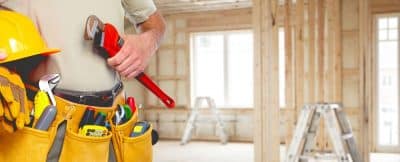
A well-organized garage should include proper tool storage solutions, especially for dangerous instruments. Sharp tools have to be stored safely to enhance their lifespan. This will also contribute to the safety of your workplace. This guide provides a step-by-step process on how to store sharp tools in the garage while keeping them in top-notch condition.
Assess Your Garage Space
Before we discuss portable and stationary tool storage solutions, let’s take a closer look at what your garage area actually offers. Every garage is different – they come in different sizes and shapes depending on the design that has been put in place. First, determine the wall area in terms of width and height. Also, draw attention to windows, sockets, or other fixtures. Think about the height of the ceiling and if there’s a potential for any overhead storage.
Environmental factors play a crucial role in tool storage. Temperature and humidity are common challenges in garages that cause metal tools to rust. Do not store your tools in areas that experience moisture or extreme temperatures. These affect the quality and lifespan of your garage tools. If possible, pick a spot with consistent conditions to prevent rust and corrosion.
Organizing Tools by Type
Store all your sharp tools according to their type. Keep all your saws together, chisels in one place, and knives in another. This system is quite useful because it allows for quick access to what is needed now. It minimizes the chances of getting cut while searching for a sharp tool.
Think about how frequently you use each of your tools. Items that are used most often should be placed at eye level or an easily accessible height. Infrequently used instruments can be located higher up or in areas that are more difficult to reach. This approach comes in handy during your projects since it reduces the amount of time and energy you spend.
Wall Storage Solutions
Wall storage is a game-changer for garage organization. Pegboards are one of the most traditional solutions since they are versatile and can be easily customized. A pegboard is ideal for storing a number of cordless tools of different sizes and shapes. For small, sharp tools, magnetic strips are the best. They ensure that items are easily seen and can be easily taken while occupying the least space possible.
Another good choice is wall-mounted racks and holders. These are of different types, from basic hooks to those that are designed to hold particular tools. Choose those that can easily accommodate larger instruments, such as saws and axes. Ensure that all the storage units fixed on the wall are properly screwed on the studs and can handle the load.
Bench and Drawer Storage
For smaller sharp tools, bench and drawer storage provide solid protection and organization. These include tool chests and cabinets with drawers and open shelves. There, you can store everything you need, from drill bits to utility knives. Go for models that have liners in the drawers. This feature helps to prevent tools from wobbling and hitting each other.
Workbench drawers are ideal for storing frequently used sharp tools. Install dividers or order custom inserts to avoid things rubbing on each other all the time. For the truly dedicated, get storage units crafted on your own. This way, you will get a storage solution tailored to the types of tools you possess.
Portable Storage Options
Sometimes, you need your sharp tools on the go. Tool bags and boxes can be considered to transport your instruments in a safe manner. Choose those with multiple compartments and padded sections. This will minimize the noise that comes with tools bumping against each other. Mobile carts are another perfect option. They are mobile and can follow you while you’re getting around, but also can be placed in the garage as fixed shelving units.
For quick access to essential tools, a well-organized toolbelt is a true lifesaver. Choose one that has multiple pockets and loops to hold different sharp items. This will keep your most-used items within reach while working on projects around the garage.
Protective Covers and Sheaths
Invest in protective covers or sheaths for items such as saws, chisels, knives, and others. These covers are available in different types of materials, such as plastic, leather, and fabric. Each brings its advantages – plastic is waterproof and long-lasting, leather is stylish and protective, and the fabric is compact. Such an item helps to protect the sharp edges of your garage tools.
Don’t overlook the DIY potential for covers. Larger instruments can be covered with simple wooden sheaths made with scraps of wood. Old belts can be used as straps for blades. These homemade solutions can be tailored to fit your specific tools.
Safety Measures to Follow
Consider the height at which you put your tools. Don’t place heavy or sharp objects on the shelves at eye level or above them. Otherwise, the stuff can fall down and harm the user. Instead, place these at waist height or lower for safer handling.
If you have kids or guests who occasionally visit your garage, ensure your tools are safely stored away from any potential harm. Apply a lock to cabinets and toolboxes containing sharp instruments. For wall-mounted shelves, think of getting a cabinet or a sliding door that can be closed when not in use. These additional measures help avoid accidents and keep curious hands away from dangerous tools.
Garage Tool Maintenance and Care
Set aside time each month to clean and oil your tools. This helps keep them in good condition and also offers an opportunity to check for any signs of damage or tear. When cleaning, pay special attention to hinges, movable parts, and cutting edges.
Maintenance of the rust-free environment within the garages is substantial. To minimize the presence of moisture, incorporate silica gel packets in your toolboxes. For long-term storage of rarely used tools, a light coating of machine oil can provide an extra barrier against corrosion.
Periodically reassess your storage system. Don’t hesitate to rearrange it as your tool collection increases. A clean and neat tool storage system helps make each project more pleasant and runs smoothly.
Conclusion
A safe and well-organized storage will protect your tools and improve your working environment. Ensure you evaluate the space and pick the right instruments. Always take good care of your tools. Having adopted these strategies, you will be able to increase the lifespan of your items as well as boost the enjoyment of all the projects you carry out.








